Description
Multitudes of worlds wheel through Wildspace. The crystal shells that encase them bob and drift in a turbulent, rainbow ocean which fills all the cosmos. Sturdy merchants, bold pirates, and daring explorers venture into the great, unknown vastness of the universe, seeking wealth and adventure.
The SPELLJAMMER Game puts you in command of a fantastic ship capable of spanning the tremendous distances between planets. Graceful elven flitters, stately illithid galleys, deadly beholder tyrants, and the awesome Spelljammer itself carry trade, emissaries, and heroic action throughout all the worlds of the AD&D game.
Note on the print version: The books, maps and other elements of the box set have been combined into a single volume pint book. If you plan to use the maps at your game table it is recommended that you purchase the PDF+Print combo deal and print the maps from the PDF.
Product History
Spelljammer (1989), by Jeff Grubb, is the boxed set that introduced the Spelljammer campaign setting for AD&D 2e. It was published in October 1989.
Origins. The story of Spelljammer begins in 1988 at Augie’s, a local bar in Lake Geneva, Wisconsin. TSR R&D Managers James Ward and Warren Spector took the designers there for an afternoon-long brainstorming session with the goal of planning TSR’s boxed sets for the next year.
Jeff Grubb came to the meeting with an agenda: he wanted to push the boundaries of standard fantasy. He had an idea too, one that began with a single image: a knight standing on the deck of a ship in space, unprotected from the elements. In other words, Grubb proposed “D&D in Space”.
Two boxed sets came out of the meeting: Time of the Dragon (1989), a boxed set exploring the continent of Taladas for Dragonlance; and Spelljammer. However, Grubb almost didn’t get to write the game he’d championed. Instead, it nearly went to David “Zeb” Cook; he was ready to write a new setting after two years working on AD&D 2e (1989), but figured he couldn’t write the Dragonlance box because hd didn’t know much about the setting. Fortunately for Grubb, Taladas was purposefully set apart from the epic stories of Krynn, and so didn’t require a lot of past knowledge about the setting. As a result, Cook wrote Time of the Dragon and Grubb wrote Spelljammer.
Beginning the AD&D 2e Worlds. In the days of AD&D 1e, TSR had published just a few gaming worlds — mainly the World of Greyhawk Fantasy World Setting (1980), Krynn (1984), and the Forgotten Realms Campaign Set (1987), plus a few licensed game settings like Lankhmar: City of Adventure (1985). This focus changed dramatically with AD&D 2e where TSR started releasing a new world every year, of which Spelljammer was the first.
Spelljammer set the bar high for future worlds, because it was so unique — unlike the most standard fantasy settings that had come before it. Later settings like Dark Sun (1991) and Planescape Campaign Setting (1994) would accept this challenge and move even further from fantasy’s norm.
Unfortunately, TSR’s tendency to design so many game worlds (and to continually support them) would prove a major problem for the company by the mid ’90s. They were probably cannibalizing their own audience with all of these game worlds, and this might have been a factor in the company’s 1997 demise.
About the Name. The name “spelljammer” comes from the windjammers — the iron or steel-hulled sailing ships of the late 19th and early 20th century. Predictably, the Marketing department liked the name (because it was self-explanatory) while the Legal department hated it (because it was too much like a real word, and so harder to trademark).
Grubb believes in getting his money’s worth from a name; he used spelljammer as a noun (for a class of ships), as a proper noun (for the mythical Spelljammer itself), and as a verb (for moving through space).
Laying Out the Boxed Set. At the time, TSR was packing its boxed sets full of great material — to the point where some suggest that they were selling boxes at a loss. The standard format called for two 96-page books, four big maps, and a pile of cardboard sheets. These requirements sometimes drove the design, since it called for such specific contents. For Spelljammer, it caused Grubb to include ship stat cards and standup ships.
Expanding the Multiverse. Though the original concept of Spelljammer was “D&D in Space”, the design team soon decided that the setting could also tie together TSR’s existing game worlds of the Forgotten Realms, Greyhawk, and Krynn. Spelljamming thus offered an orthogonal way of traversing worlds from the traditional “Great Wheel” cosmology; this was one of the biggest expansions ever to D&D’s multiverse.
Traveling between different worlds called for the creation of “crystal spheres” which enclosed each world. This allowed the different worlds to have different physical laws and also gave an explanation for the different planets and constellations found in each universe. The inspiration for this idea was the cover of Daniel Boorstin’s The Discoverers (1983). It showed someone crawling out from within a sphere to a universe beyond.
Sadly, TSR’s later settings were never well-integrated into the Spelljammer universe. CGR1: The Complete Spacefarer’s Handbook (1992) included some notes on Dark Sun and Ravenloft, but they were fairly minimal.
Monsters of Note. One of the most interesting elements of Spelljammer was that it let Grubb reinvent traditional fantasy monsters as spacefaring races.
The mind flayers got the best attention — to the point where they became de facto mascot of the Spelljammer universe. This was in part because they had long been spacefarers, ever since one showed up in S3: “Expedition to Barrier Peaks (1980), and in part because Jim Holloway designed a beautiful chambered nautilus spaceship for them. When the designers behind the Ravenloft Campaign Setting (1990) later wanted to include mind flayers in the their setting, the Marketing department actually protested because they were so closely associated with Spelljamemr!
The beholder also got considerable expansion in Spelljammer, primarily due to the work of Holloway. He drew several different beholder ships, and this caused the Spelljammer designers to create variant groups of beholders who fought genetic wars against each other.
There were several new monsters in Spalljammer as well. The neogi were intended as a new, villainous race — required because the mind flayers were gaining more depth. The hippo-headed giff were another animalistic race of the sort that Grubb enjoys — wit others being the walrus-men/thanoi of Krynn and the yak-men of Al-Qadim.
Future History. Spelljammer was supported through 1993 with four boxed sets, two Monstrous Compendiums, fourteen modules, six novels, and fifteen comics. Grubb stayed on to manage the line through the first year.
After its cancelation (amidst many cancellations in 1993), TSR introduced a new universe-spanning setting: Planescape.
Paizo Publishing returned to the idea of spelljamming with Dungeon #92 / Polyhedron #151 (May/June 2002), which included “Spelljammer: Shadow of the Spider Moon”, a reimagined Spelljammer universe.
About the Creators. Besides managing the Spelljammer line for the first year, Grubb also wrote The Legend of Spelljammer (1991). After that, his next major project was Al-Qadim: Arabian Adventures (1992).
About the Product Historian
The history of this product was researched and written by Shannon Appelcline, the editor-in-chief of RPGnet and the author of Designers & Dragons – a history of the roleplaying industry told one company at a time. Please feel free to mail corrections, comments, and additions to shannon.appelcline@gmail.com.
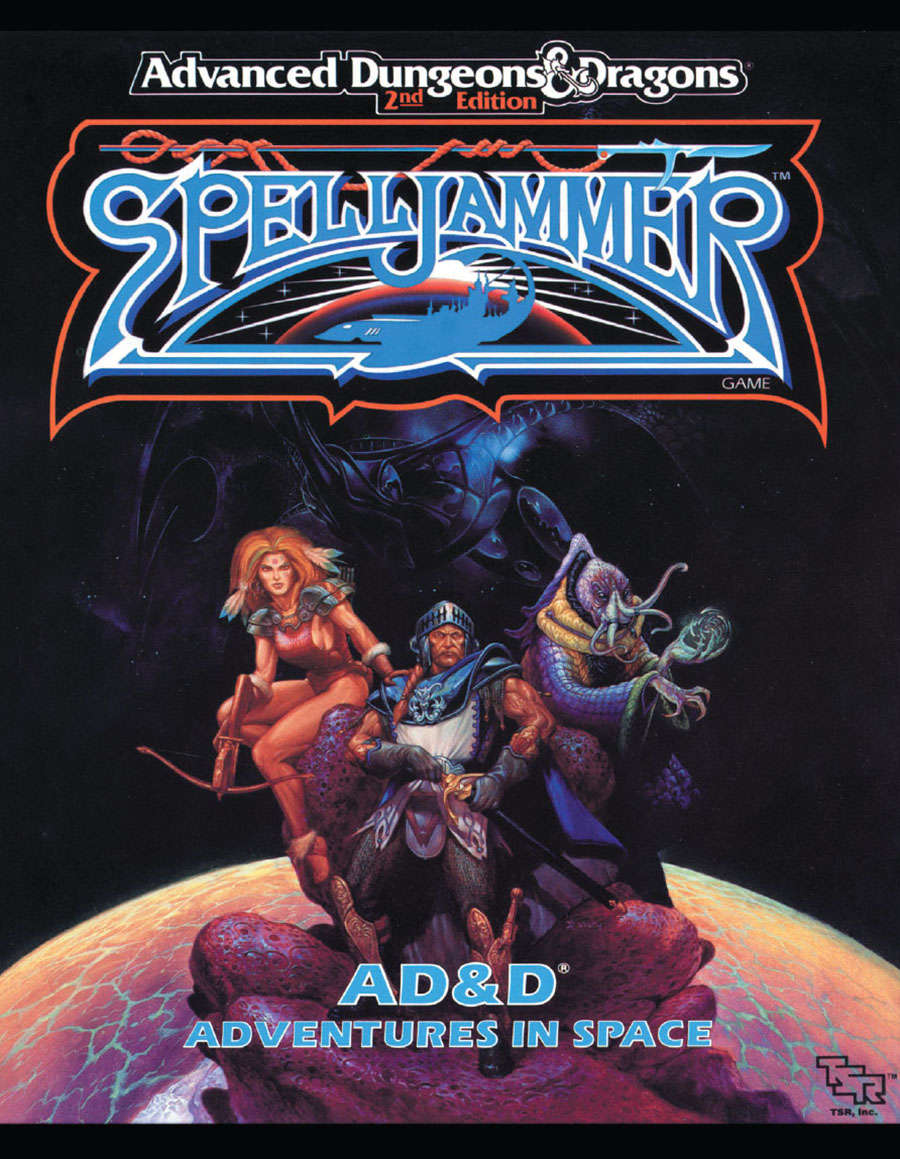
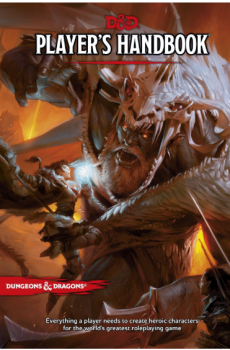
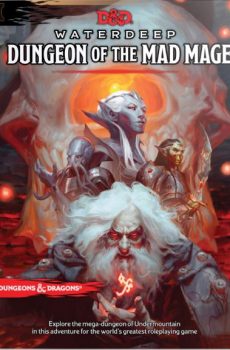
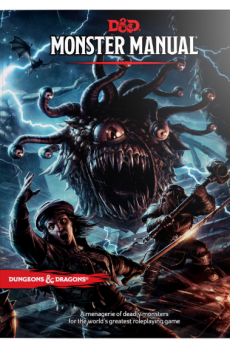
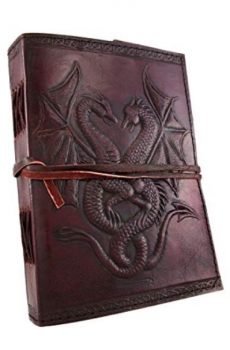
Reviews
There are no reviews yet.